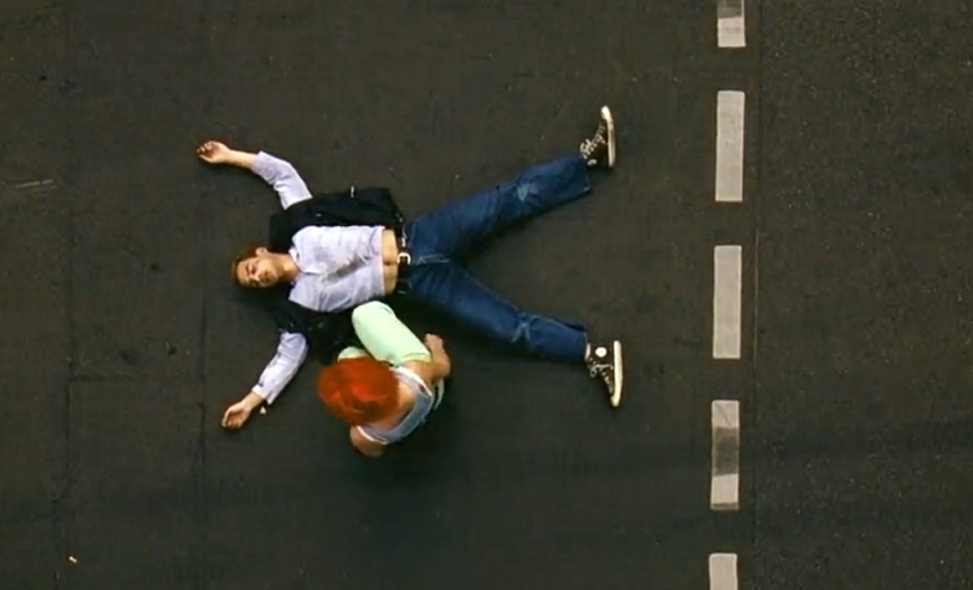Part B: Run Lola Run Analysis
Run Lola Run is a film built on repetition and variation, investigating how slight changes can result in extremely varied outcomes. Its convoluted plot is really the resets which occur after each of Lola’s 20-minute runs.
Plot Twists: The Three Runs
Run 1: This run leads to disaster and failure. Lola is late, tries to get money from her dad and is refused, and then she and Manni decide to rob his bank. The police arrive, and a nervous policeman accidentally shoots and kills Lola. What changes: The film rewinds and gives Lola a second chance.
Run 2: In this, Lola meets a man and his dog on the stairs and, in a moment of inattention, trips and falls behind a little. This has all repercussions. When she reaches her father’s bank, he’s already leaving. Frustrated, she robs the bank alone with a security guard’s gun. She is able to get the money to Manni, though, as he dashes across the street to catch up to her, he is run down and killed by an ambulance. What changes: Again, the film reverses, as this sequence of events is not a success yet.
Run 3: This final run is the “successful” one. A split second of hesitation causes Lola to miss her father entirely, so she runs into a casino. Believing that she has nothing to lose, she bets on the roulette wheel and receives the 100,000 marks through two magically lucky spins. Meanwhile, Manni encounters the vagrant who originally stole his money and manages to recover it. Lola is timely, with winnings from her own money, to find Manni is already safe. What’s different: Each character succeeds independently, leading to a successful ending.
Breadcrumbs and Foreshadowing
Indeed, the movie provides the viewer “breadcrumbs” so the shifts in story aren’t entirely unexpected.
The opening animated segment clearly establishes the themes of chance, free will, and repetition of the movie. The question posed by the narrator (“Who are we? Where do we come from?”) and the shot of the spiral clock tip that this won’t be a simple tale.
The fast-paced, game-like editing and techno music create the feeling of a video game, where death and respawning are acceptable mechanics. Once done with the first run, the audience is primed to think that Lola can get another “life.”
Chekhov’s Gun Elements
There are items established early on that are totally essential later on.
Lola’s Scream: Early on in the film, we hear Lola scream in disgust. It is merely a character tic. But on the third pass, her disintegrating scream is put to positive use. She screams at the roulette wheel in the casino, and the ball drops in her favor and she wins the money she needs.
The Ambulance: The ambulance is a recurring element in the background of all three runs. In the first run, it nearly hits Lola and later crashes. In the second, its importance escalates dramatically when it becomes the direct cause of Manni’s death. It is introduced as a minor detail that becomes a major plot device.
The Security Guard’s Gun: During the initial playthrough, the policeman’s gun is a source of tension that later kills Lola. During the second playthrough, the bank security guard (her colleague’s fellow) is a familiar character. His gun is remembered by Lola, and she takes advantage of the information to steal his gun and rob the bank. The gun is now set, and it is the catalyst for one of her plots later on.

Provide Feedback